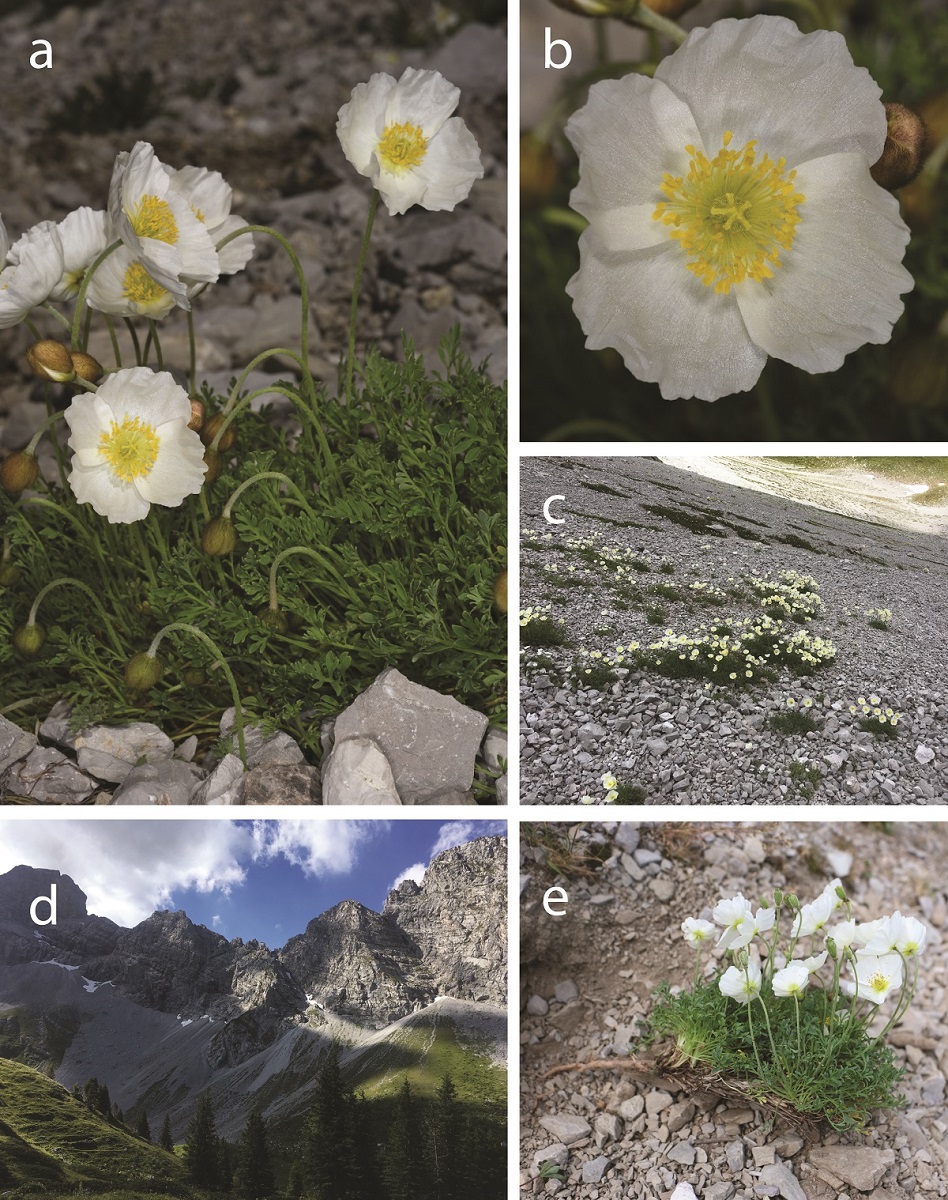Glacial relicts, especially those with very narrow habitat requirements, are particularly affected by global warming and thus good models for studying the future biodiversity patterns of the Alps. We have used as a model taxon Papaver occidentale, a glacial relict endemic to the Western Prealps, belonging to the alpine poppy complex (P. alpinum aggr.). All known localities were visited, each population was georeferenced and the number of individuals was estimated. Species Distribution Modelling (SDM) was used to evaluate the present and future potential distribution range and habitat suitability, taking into account the specificity of its habitat (calcareous screes). According to our study, there are globally 19 natural populations of P. occidentale. The total number of individuals was estimated at 30756 (with 72% of all individuals in canton of Bern). The taxon is a highly specialized alpine plant growing preferentially between 1900 and 2100 m a.s.l. on north facing screes. Predictions for the end of the 21st century indicate that suitable area will significantly decrease, for both the entire studied area (0-30% remaining) and sites nearby current P. occidentale populations (0-17% remaining). Under the most severe scenario, the species risks complete extinction. The long-term in situ conservation of P. occidentale, and all other taxa of the P. alpinum complex, is unlikely to be achieved without slowing global climate change. More generally, our fine-scale study shows that local environmental buffering of large-scale climate change in high-mountain flora may be very limited in specialised taxa of such patchy environments as screes.

